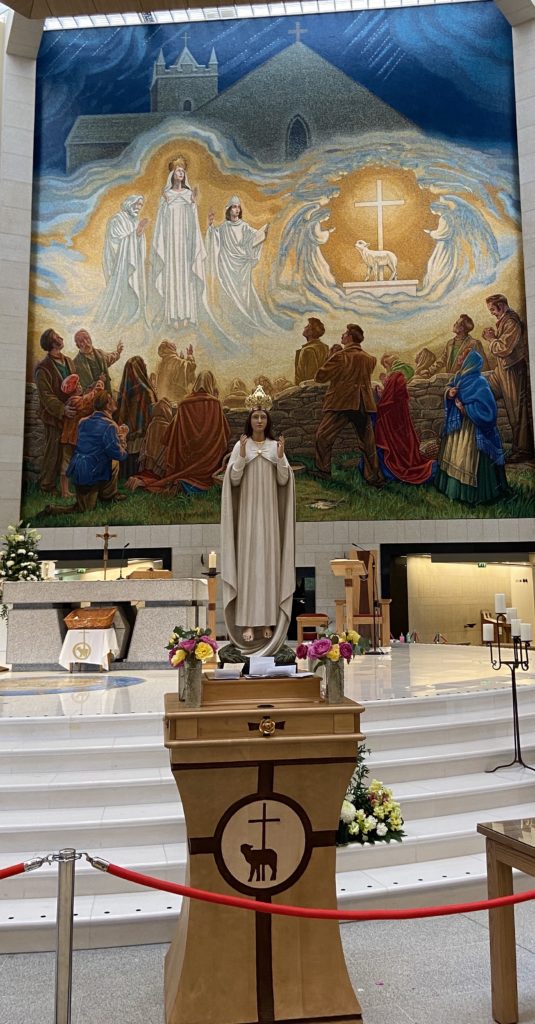Although Ireland was once known for its overwhelming adherence to organized religion, the vast majority being Catholic, over the last 40 years the country has seen a plummet in the number of people who regularly attend church and more broadly those who have a belief in God which plays a role in their lives. As was explained to me by an Irish man, who like so many others was raised Catholic but holds no religion, Ireland has essentially become an agnostic or even atheist secular country. The marks of religion are everywhere: statues of the Blessed Virgin Mary in people’s windows, Christian symbols embedded in architecture and national imagery, but by and large the people aren’t religious.
Living in Ireland for a month I can confirm the truth in these statements. Religious adherence is overwhelmingly generational, older people are far more likely to be practicing Catholics, and finding Irish people my age who are faithful is like trying to find a needle in a haystack. I have however come across some religious people, old and young, who explained to me how the situation looks from an Irish perspective. A consistent theme conveyed to me was that the modern Irish people saw leaving the Church as a way to finally throw off the shackles of a “backwards, out-of-date institution”; adhering to religion was a what they did in the old days when Ireland had a poor rural economy and to progress as a modern nation it was necessary to rid ourselves of this dinosaur.
The majority having embraced secularism, those who remain in the Church have only a memory left of a time when Ireland was called the “land of saints and scholars.” Because of the perception of the Church as oppressive, young people who are religious are made fun of and ostracized for their devotion. One young man told me that if he ever expressed his faith around an audience of his peers he immediately would be a member of the “out-group,” and looked at it as a strange anomaly.
As I mentioned in a previous blog many Irish speakers in the Gaeltacht tend to be older (and thus likely more religious), so I have seen week after week the state of religion in Ireland. Most Sundays I’m the youngest person in the church and the average age is about 75, with a smattering of a few people across a mostly empty church and a priest who would have retired a long time ago if there was anybody to replace him. I thought attendance was depressingly low back in the States, but compared to Ireland, church attendance in the U.S. looks like the promised land. Apparently I’m not the first to realize the stark contrast, and one young Irish man told me that those who are faithful among the young generations see the U.S. as “Catholic Disneyland”, a few of his friends even having moved to the States to marry women they had originally met online on Catholic dating sites, finding opportunities to date Irish girls who share their values few and far between.
It is worth noting that some Irish speakers assign blame to the Church for the decline of the language with the criticism that it didn’t do enough to protect the language in the face of English Protestant oppression. While there certainly is truth in the claim that the Church could have done more, a professor at Notre Dame explained to me that during the 1800s, many of the Catholic clergy were from middle class merchant backgrounds and thus wouldn’t have had any Irish themselves.
Conversing with people of a minority group, practicing Catholics, has been informative about the similarities in experience between linguistic minorities and religious minorities particularly in terms of social exclusion.
